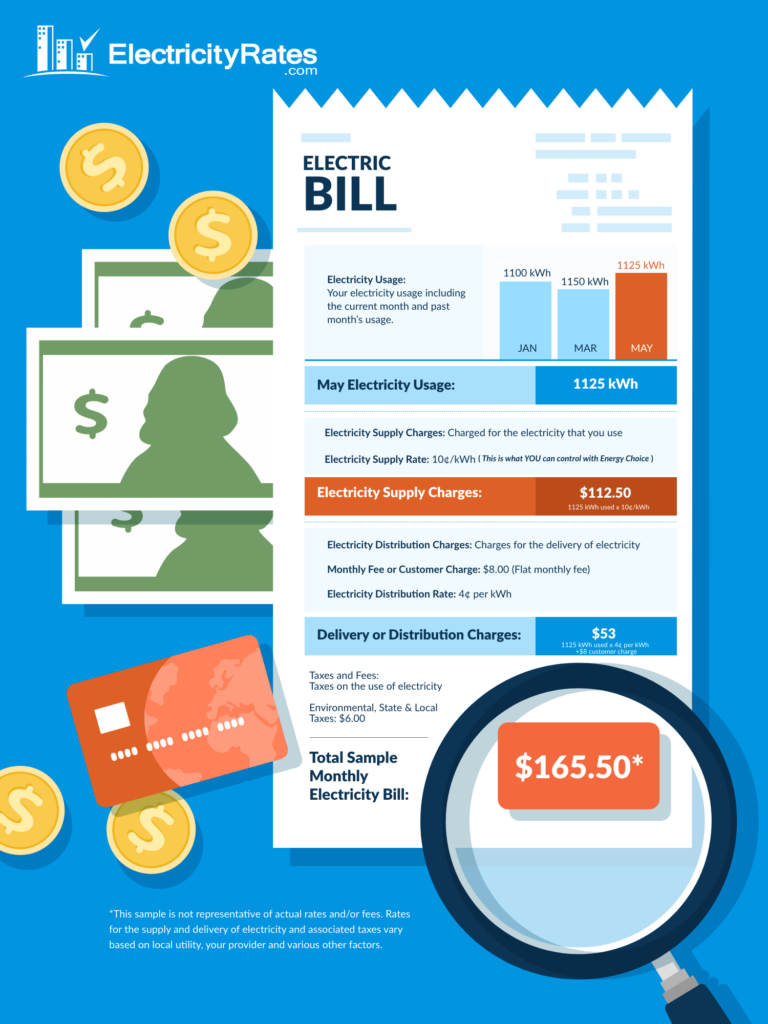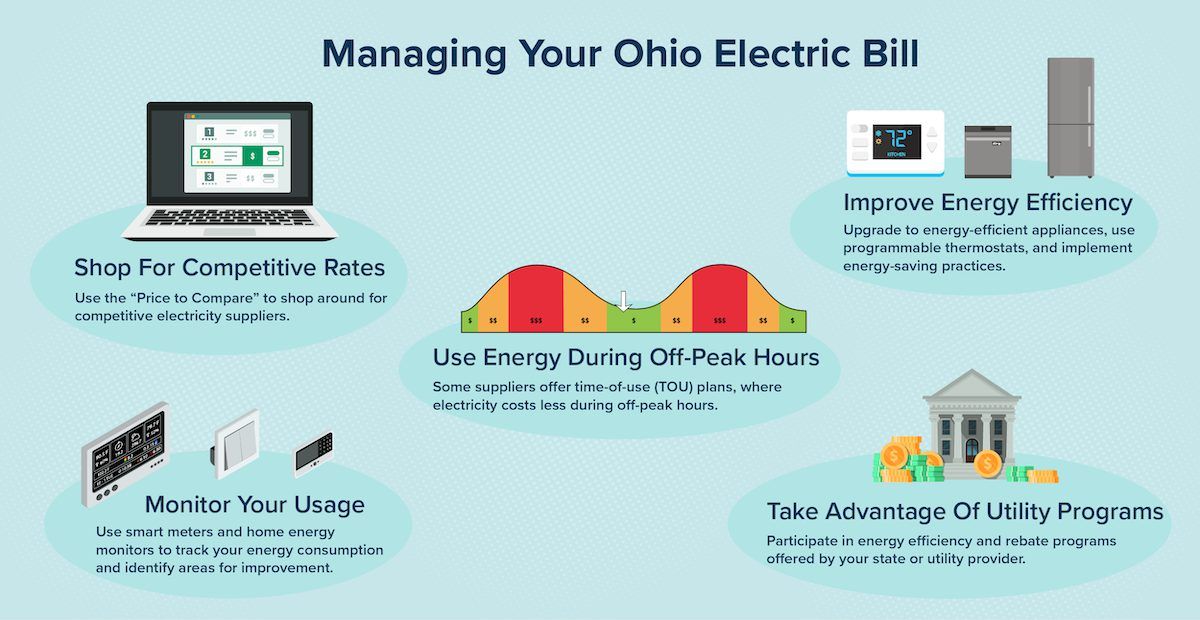The browser you are using is not supported. Please consider using a modern browser.

Why Is My Electric Bill So High in Ohio?
Table of Contents

If you’ve been wondering, “Why is my electric bill so high in Ohio?” You’re not alone. Many Ohioans have experienced rising electricity costs and are seeking to understand the reasons behind the increases.
Below we’ll delve into the intricacies of Ohio’s electricity market, exploring historical deregulation, current pricing structures, and the factors contributing to higher bills. We’ll also discuss what the state and utility companies are doing to mitigate rising costs and provide assistance to those facing financial hardship. Additionally, we’ll offer practical tips on how residents and businesses can manage their Ohio electricity bills.
Historical Overview of Electricity Deregulation in Ohio
Ohio’s journey toward electricity deregulation began in 1999 with the passage of Senate Bill 3. This legislation aimed to introduce competition into the electricity market, allowing consumers to choose their electricity supplier while still receiving distribution services from local utility companies. The goal was to lower prices through competition and give consumers more control over their energy choices.
Before deregulation, utility companies owned the entire electricity supply chain, from generation to distribution. With deregulation, the market was divided into three components: generation, transmission, and distribution. Generation was opened to competition while transmission and distribution remained regulated.
Ohio’s Price to Compare
The “Price to Compare” is a crucial concept for Ohio electricity consumers. It represents the price per kilowatt-hour (kWh) that consumers pay for the generation portion of their electricity from their local utility. This rate is used as a benchmark to compare offers from competitive electricity suppliers. If a supplier offers a rate lower than the “Price to Compare,” consumers may save money by switching.
Despite deregulation, many consumers still pay high electricity bills. The “Price to Compare” can fluctuate based on several factors, including wholesale electricity prices, fuel costs, and market demand. When these costs rise, so does the “Price to Compare,” leading to higher bills for consumers who haven’t switched to a competitive supplier.
| Utility Name | Price to Compare (¢/kWh) | Effective Date | Electricityrates.com Price |
|---|---|---|---|
| AEP Ohio: Columbus | 10.65¢ | January 1, 2026 | 9.00¢ |
| AEP Ohio: Ohio Power | 10.65¢ | January 1, 2026 | 8.99¢ |
| AES Ohio (Dayton Power & Light) | 8.00¢ | November 1, 2025 | 8.79¢ |
| Duke Energy | 10.06¢ | January 1, 2026 | 7.99¢ |
| Ohio Edison | 9.33¢ | January 1, 2026 | 8.09¢ |
| The Illuminating Co | 9.50¢ | January 1, 2026 | 8.09¢ |
| Toledo Edison | 9.69¢ | January 1, 2026 | 7.99¢ |
Factors Contributing to Rate Hikes and Higher Bills
Several factors contribute to the rising electricity costs in Ohio:
1. Wholesale Energy Prices
The cost of generating electricity has increased due to higher prices for natural gas and other fuels. Since natural gas is a primary fuel for electricity generation, any increase in its price directly impacts electricity rates.
2. Infrastructure Investments
Utilities are investing in upgrading and maintaining the electricity grid to ensure reliability and accommodate new technologies. These costs are often passed on to consumers through higher rates.
3. Environmental Regulations
Compliance with environmental regulations can lead to increased operational costs for power plants. These costs are typically transferred to consumers.
4. Market Demand
Higher demand for electricity, especially during peak times, can drive up prices. Ohio’s hot summers and cold winters contribute to significant seasonal demand spikes.
5. Transmission and Distribution Costs
While generation costs can be competitive, transmission and distribution remain regulated and can be a significant portion of the electricity bill. These costs cover the maintenance and operation of the grid and are subject to regulatory approval.

How Much Can You Save Ohio?
Switching electricity providers has never been easier. Compare rates from leading providers in minutes and see how much you can save.
Components of an Ohio Electricity Bill
Understanding your Ohio electricity bill can help you identify why your costs might be high. An electricity bill generally consists of three main components:
1. Usage Charges
This is the amount you pay for the electricity you use, measured in kilowatt-hours (kWh). The rate can vary depending on your supplier and the plan you’ve chosen.
2. Supply Charges
These charges cover the cost of generating the electricity. If you haven’t chosen a competitive supplier, this rate is set by your utility’s “Price to Compare.”
3. Distribution Charges
These are the costs associated with delivering electricity to your home or business. They include maintenance of the grid, infrastructure improvements, and regulatory fees.

Efforts to Combat Rising Costs
The state of Ohio and utility companies are taking steps to address rising electricity costs:
1. Energy Efficiency Programs
Many utilities offer programs to help consumers reduce their energy usage. These programs may include rebates for energy-efficient appliances, home energy audits, and incentives for upgrading insulation and HVAC systems.
2. Customer Assistance Programs
Ohio offers several assistance programs for low-income households, such as the Home Energy Assistance Program (HEAP), which provides financial assistance for heating and cooling costs.
Another helpful program is the Percentage of Payment Income Plan (PIPP). Ohio households at or below 175% of the federal poverty guidelines may qualify for energy subsidies that let them pay a monthly energy bill in proportion to their household income.
Utility companies may also offer payment plans and budget billing to help manage monthly costs.
3. Grid Modernization
Investments in smart grid technology aim to improve efficiency and reliability, potentially reducing long-term costs. Smart meters, for example, allow consumers to monitor and manage their energy usage more effectively.
Managing Your Ohio Electric Bill
There are several steps you can take to manage and potentially lower your electricity bill:
- Shop for Competitive Rates: Use the “Price to Compare” to shop around for competitive electricity suppliers. You can often find better rates than those offered by your utility. Even easier than using the state’s “Price to Compare” site, Apples to Apples Ohio, is using sites like ElectricityRates.com which let you simply input your ZIP Code to compare energy plans in your area.
- Improve Energy Efficiency: Upgrade to energy-efficient appliances, use programmable thermostats, and implement energy-saving practices, such as turning off lights and unplugging electronics when not in use.
- Use Energy During Off-Peak Hours: Some suppliers offer time-of-use (TOU) plans, where electricity costs less during off-peak hours. Shifting energy-intensive activities, like laundry and dishwashing, to these times can save money.
- Monitor Your Usage: Use smart meters and home energy monitors to track your energy consumption and identify areas for improvement.
- Take Advantage of Utility Programs: Participate in energy efficiency and rebate programs offered by your state or utility provider. These can provide significant savings on energy-efficient upgrades.

Taking the Edge Off Those “O-High-O” Electric Bills
Understanding why your electric bill is so high in Ohio requires a deep dive into the state’s electricity market, including its history of deregulation, the “Price to Compare,” and the various factors contributing to rate increases.
While rising costs are influenced by wholesale prices, infrastructure investments, environmental regulations, and market demand, there are measures you can take to manage your Ohio electric bill.
By shopping for competitive rates, improving energy efficiency, and utilizing available assistance programs, Ohio residents and businesses can better control their electricity costs and reduce their financial burden.
For those looking to find the most affordable rates, websites like ElectricityRates.com can be invaluable resources in comparing plans and selecting the best options for your household or business.